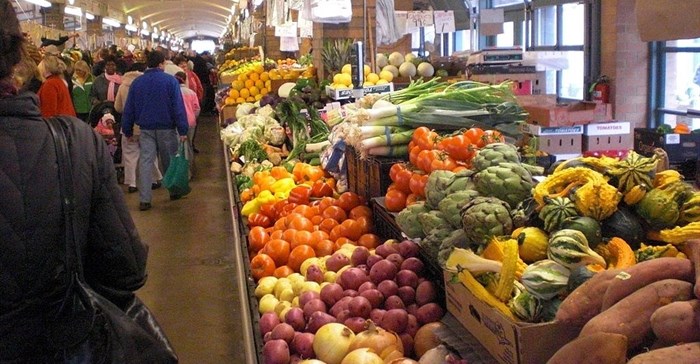How urbanisation can benefit farmers

Urbanisation changing how farmers connect
With rapid urbanisation dramatically shifting demographics across the developing world in recent years, this year’s report focuses on how urbanisation is changing food systems, health, and development. The report finds that cities provide an opportunity to boost farmers’ incomes if they are effectively connected through strong value chains.
“Urbanisation is driving huge changes in how small farmers connect with markets to sell their goods, global diets, and the way that food systems are governed,” said Shenggen Fan, director-general of the IFPRI. “Helping policy-makers, city residents and rural smallholders in the developing world understand this changing environment, and how to respond to it, is absolutely necessary to achieve the sustainable development agenda.”
Small farmers and the urban consumer
Cities provide opportunities for rural smallholders to raise their incomes by connecting to larger urban markets and typically more wealthy urban consumers. For urban consumers, small farmers can provide an important source of diverse and nutritious foods. But the links between these areas in the developing world are often weak or broken, hindering growth and development.
In Nigeria, for example, 60% of rice purchased in urban areas is imported, despite significant efforts to boost domestic production. A weak value chain for postharvest processing of domestic rice creates inconsistencies in labelling, quality, and taste that turn off urban consumers.
Engines of change
On the other side of the value chain, research in Ethiopia has revealed that proximity to cities is an important determinant of whether farmers adopt new agricultural technologies that improve yields and products. Farmers near the capital of Addis Ababa were far more likely than those in remote areas to adopt new technologies like fertiliser and improved seed varieties because they had access to better information about best practices and urban markets where they could sell their higher-value products for higher prices.
Such increased investment in modern agricultural technologies and inputs, along with the use of communication technologies like mobile phones, and improvements in value chains – including cold storage, milling and access to supermarkets – are sparking a ‘quiet revolution’ that is increasing the productivity of staple crops.
Cities are increasingly becoming engines of this sort of change in agriculture, but without the investment that provides strong connections between urban and rural areas, smallholders further away from cities will not be able to take advantage of the benefits.
Countries like Vietnam, Ethiopia, and Ghana have demonstrated that investments in quality roads, electricity, and reliable storage facilities strengthen the connections that can stimulate growth and improve welfare in both rural and urban areas.
This year’s report also features chapters on how urbanisation is changing diets and the landscape of poverty and health, and the role informal economies play in providing food to Africa’s urban populations, as well as updated data sets on global hunger, agricultural investment, public expenditures and more.
Source: AgriOrbit

AgriOrbit is a product of Centurion-based agricultural magazine publisher Plaas Media. Plaas Media is an independent agricultural media house. It is the only South African agricultural media house to offer a true 360-degree media offering to role-players in agriculture. Its entire portfolio is based on sound content of a scientific and semi-scientific nature.
Go to: http://agriorbit.com/













